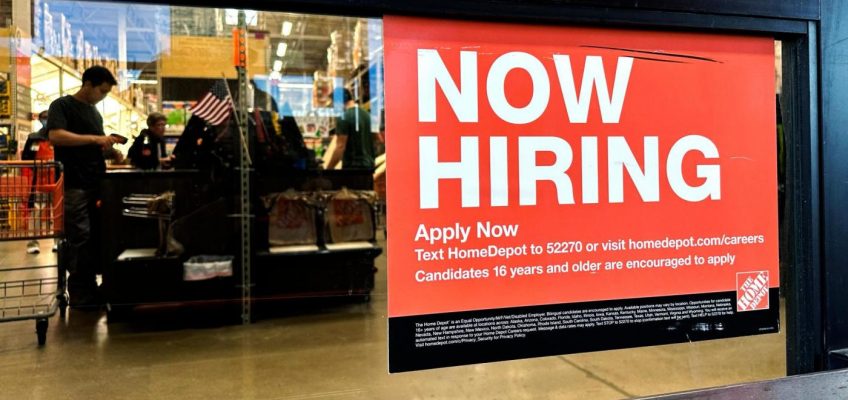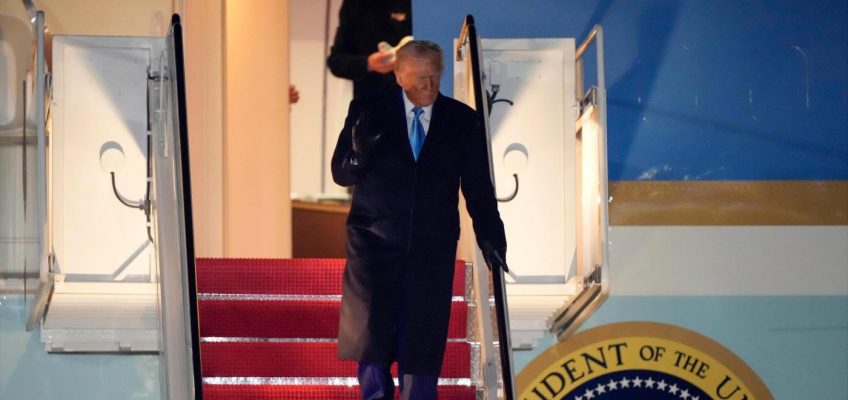By KEVIN FREKING, Associated Press
WASHINGTON (AP) — Senate Majority Leader John Thune teed up a vote this week on a budget plan that sets the stage for a massive boost in defense and border security spending, and leaves a looming tax cut fight for later this year.
The move is designed to give President Donald Trump an early policy win and put pressure on House Republicans to join rather than pursue a separate, more comprehensive effort that also risks taking far longer to pass, if at all.
Trump undercut the Senate GOP’s efforts on Wednesday, calling on both chambers to pass the House budget resolution. “The House Resolution implements my FULL America First Agenda, EVERYTHING, not just parts of it,” Trump wrote on social media.
Yet Thune is proceeding as planned, despite Trump’s stated preference for the House effort.
“If the House can produce one big beautiful bill, we’re prepared to work with them to get that across the finish line, but we believe the president also likes optionality,” Thune said.
The resolution is not a bill and does not get signed into law by the president, but its passage unlocks a process that allows Republicans to enact their priorities later this year even if Democrats unanimously oppose it.
Here’s what to know.
What’s in the Senate plan?
The budget resolution, authored by Sen. Lindsey Graham, the Republican chairman of the Senate Budget Committee, sets the stage for about $342 billion in increased spending on border security, defense and the Coast Guard.
Senate pushes toward confirmation of Kash Patel as FBI director
Trump says federal government should ‘take over’ DC, backing congressional GOP push
Trump backs idea to send some DOGE savings to American citizens
Lutheran Social Services of Minnesota laying off 27 after Trump suspends refugee program
Trump DOJ seeks delay in Minneapolis policing consent decree
Graham said the spending would take place over four years and be paid for with reduced spending elsewhere in the federal government, though the resolution itself does not specify how those cuts would occur.
The budget resolution advanced out of committee last week on a party-line vote. It directs the Senate Homeland Security Committee to increase spending by up to $175 billion, the Senate Armed Services Committee to spend up to $150 billion more and the Senate Commerce panel to increase spending by about $20 billion. This is on top of the annual spending that Congress provides through a separate legislative process.
“Build the wall, deport illegal aliens, and create additional detention space so we don’t have to release illegal immigrants into the community,” Graham said. “And God knows the military needs more money in these dangerous times.”
What happens this week?
The Senate proceeded to Graham’s budget plan on Tuesday evening, opening it up to 50 hours of debate. Once the debate time has expired — but before a vote on final passage — senators will hold what’s known in Congress as a “vote-arama.” It’s a whirlwind series of votes over several hours in which senators seek to amend the plan.
The votes often last into the early morning hours before exhausted lawmakers decide they’ve had enough and move to a final vote.
The amendments often are designed to force lawmakers from the other party to take difficult votes on hot-button issues that could prove difficult to explain in the next election cycle.
Sen. Patty Murray, D-Wash., said Republicans should “get ready for a late night and an early morning.”
“We are going to make sure the people back home know that Elon Musk is firing VA doctors and food safety inspectors — for no cause whatsoever — and illegally defunding the programs that Americans care about,” Murray said.
A long way to go
Once a budget plan is approved, committees would draft legislation consistent with their instructions to find savings or increase spending in programs under their jurisdiction. But the formal work needed to advance those recommendations can’t take place until both the House and Senate pass identical budget plans.
At some point, Republicans in the House and Senate will have to resolve their differences for them to use the tool that will allow the package to pass with a simple majority in the Senate and sidestep a Democratic filibuster. For now, they are competing with each other to win Trump’s favor.
Where the House stands
The House does have momentum for its efforts after a few weeks of delay. The chamber’s Budget panel has advanced its more comprehensive budget plan to the floor on a party-line vote. Speaker Mike Johnson’s office said it will come up for a vote in the full chamber next week when the House returns to Washington.
Their plan would allow committees to provide for up to $4.5 trillion in tax cuts and $300 billion in new spending. It would also instruct committees to make at least $1.5 trillion in spending reductions elsewhere in the federal government over the next decade. And it would lift the debt ceiling so that the U.S. can borrow and continue paying its bills.
The Committee for a Responsible Federal Budget, a nonpartisan fiscal watchdog, estimates that the House budget plan would allow for a nearly $4 trillion debt increase over the next decade.
Johnson can spare only one defection if Democrats are unanimous in opposing the plan next week, creating a high-wire act for his leadership team.
Some Republicans have raised concerns about the level of spending cuts that could occur with programs like Medicaid. But those lawmakers will also feel pressure to help Trump enact his priorities or face his wrath for not going along.




